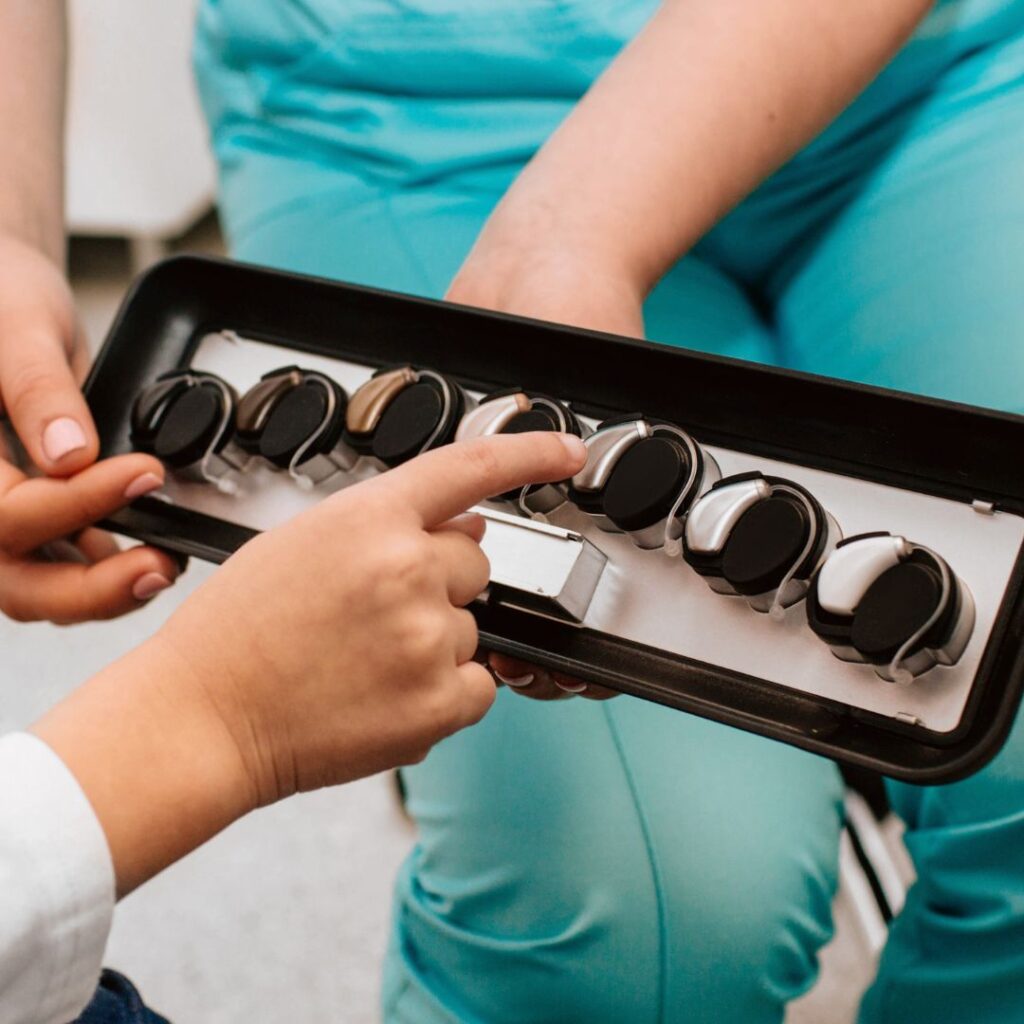

Introduction
Selecting the ideal hearing aid is essential for improving your quality of life, but there are a lot of options available, making the choice difficult. To make things easier, have a professional audiologist do a thorough hearing evaluation to determine the extent of your hearing loss and your unique hearing requirements. While examining different hearing aid styles and technological features, take into account elements such as your preferences, daily activities, and lifestyle. Seeking professional advice from an audiologist can help you choose and modify your hearing aids for maximum comfort and efficacy.

Get a Hearing Evaluation
The vital first step in taking care of any problems you may have with your hearing is to get a hearing evaluation. A thorough evaluation, usually carried out by a certified audiologist, entails a battery of tests to gauge your hearing sensitivity at various frequencies and your comprehension of spoken language. This procedure offers important insights into the best course of action for enhancing your auditory health. A hearing evaluation serves as the basis for well-informed decisions regarding possible treatments, such as the usage of hearing aids if necessary, regardless of whether you’ve observed changes in your hearing or you just want to learn more about your hearing skills.
Understand Your Hearing Needs
When choosing the best hearing aid, it is essential to comprehend your hearing demands. Think about the settings you regularly work in and visit. Are they peaceful or loud? Which types of audio are you most difficult to hear? Is it dialogue on television, music, or conversations? Evaluating these factors enables you to identify the characteristics that are essential for your hearing aid, such as Bluetooth connectivity for smooth device integration, directional microphones for speech focus, and noise reduction capabilities. Finding a hearing aid that successfully satisfies your daily hearing needs can be made easier by identifying your unique problems and preferences.

Learn About Hearing Aid Styles
There are many different designs of hearing aids available to suit different tastes and levels of hearing loss. With their sturdy features and versatility, behind-the-ear (BTE) versions sit snugly behind the ear and accommodate a wide range of hearing needs. Custom-molded to fit into the outer ear, in-the-ear (ITE) models offer a discrete appearance and convenient handling. For ultimate discretion, completely-in-the-canal (CIC) and invisible-in-the-canal (IIC) designs are attractive since they are almost undetectable while worn. within the ear canal, receiver-in-canal (RIC) and receiver-in-the-ear (RITE) devices provide a comfortable fit and crystal-clear sound quality.

Try Before You Buy
Choosing the correct hearing aid requires taking the “trying before you buy” approach. A lot of audiologists provide trial times when you can try out several models in practical environments. You can evaluate the comfort, functionality, and suitability of the hearing aids for your particular hearing needs through this hands-on experience. It’s a chance to decide which features—like Bluetooth connectivity or noise reduction—are most useful to you on a daily basis. Trials also offer insightful information about modifications that could be required for the best comfort and efficacy. You can make a more educated choice and make sure the hearing aids you select ultimately improve your hearing by making the most of trial periods.
Conclusion
Choosing the right hearing aid involves careful consideration of your hearing needs, lifestyle, and personal preferences. By following these steps and seeking guidance from a qualified audiologist, you can find a hearing aid that enhances your hearing and improves your overall quality of life.